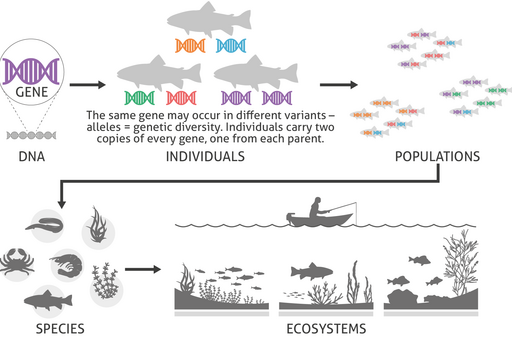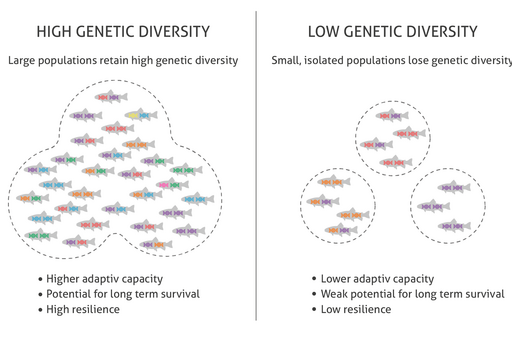
This is genetic biodiversity
Genetic diversity is the biological variation that occurs within species. It makes it possible for species to adapt when the environment changes. Genetic diversity is particularly important under rapid environmental change, such as in the Baltic Sea.
Genetic diversity makes it possible for species to adapt when the environment changes. Thus, large genetic diversity – a big gene pool – positively affects ecosystem resilience and function. When we drain species of their genetic diversity we destroy their adaptive potential, and their long-term survival will be jeopardised.

Keep populations large and connected
The most efficient way to counteract loss of genetic diversity is to maintain large and well connected populations. Small and isolated populations will rapidly lose genetic variation resulting in lower adaptive capacity, loss of resilience and weak potential for long-term survival.

How to get the data?
Conservation management of genetic diversity requires knowledge on the genetic composition of the species in question. A fist step is to collect samples from the field.